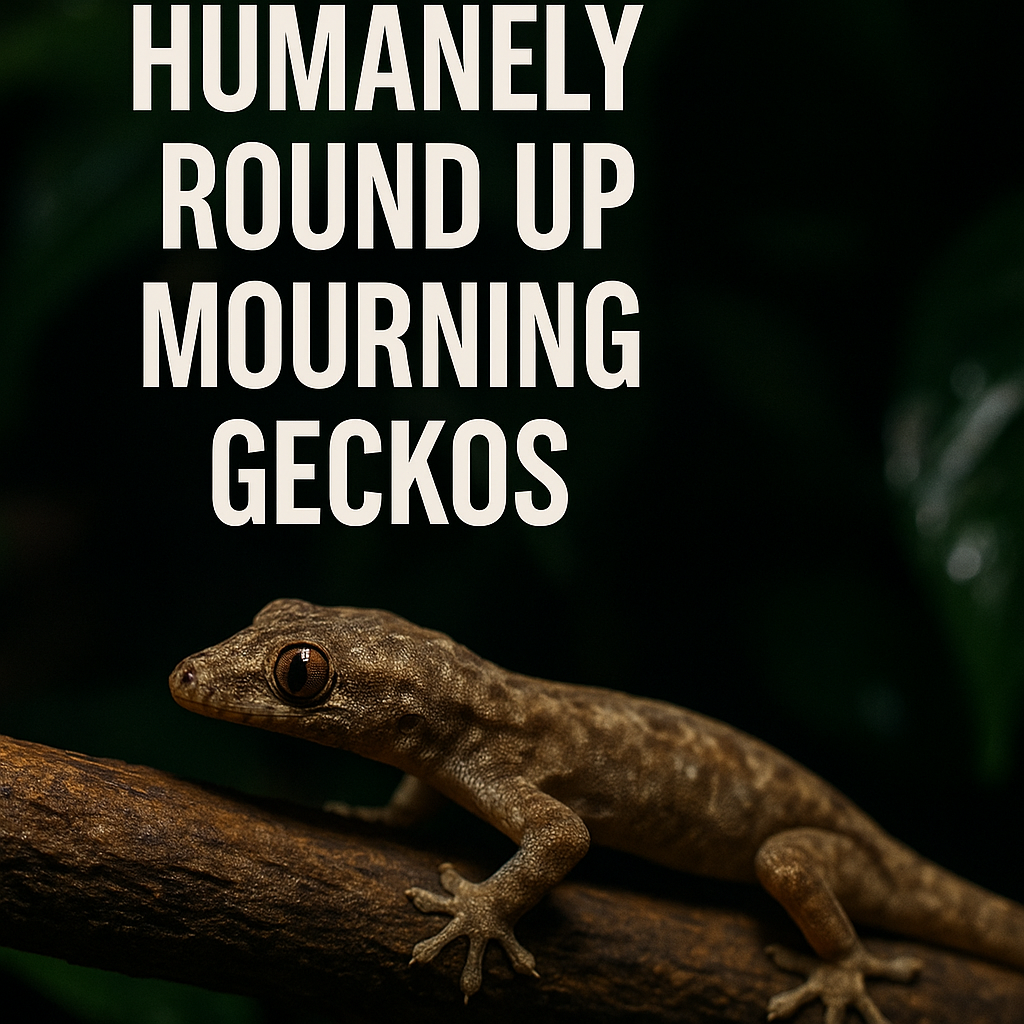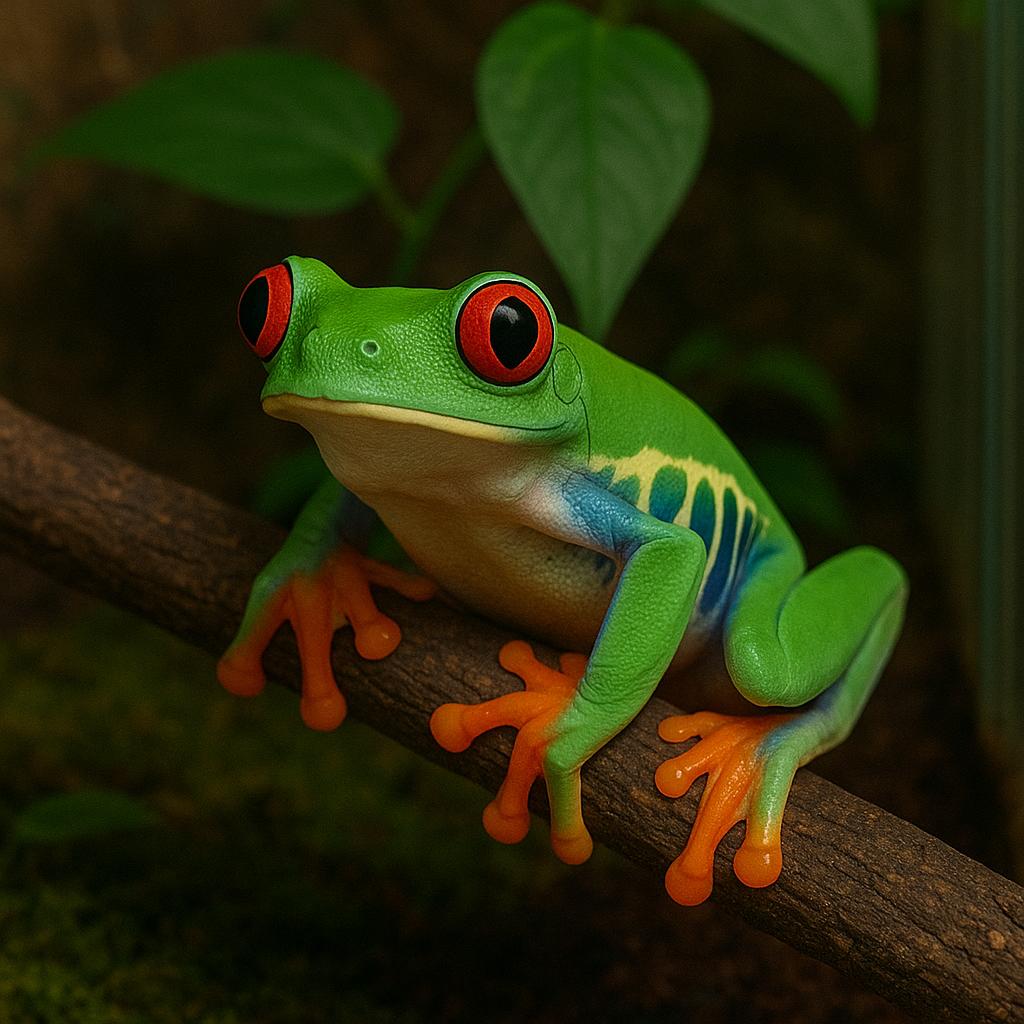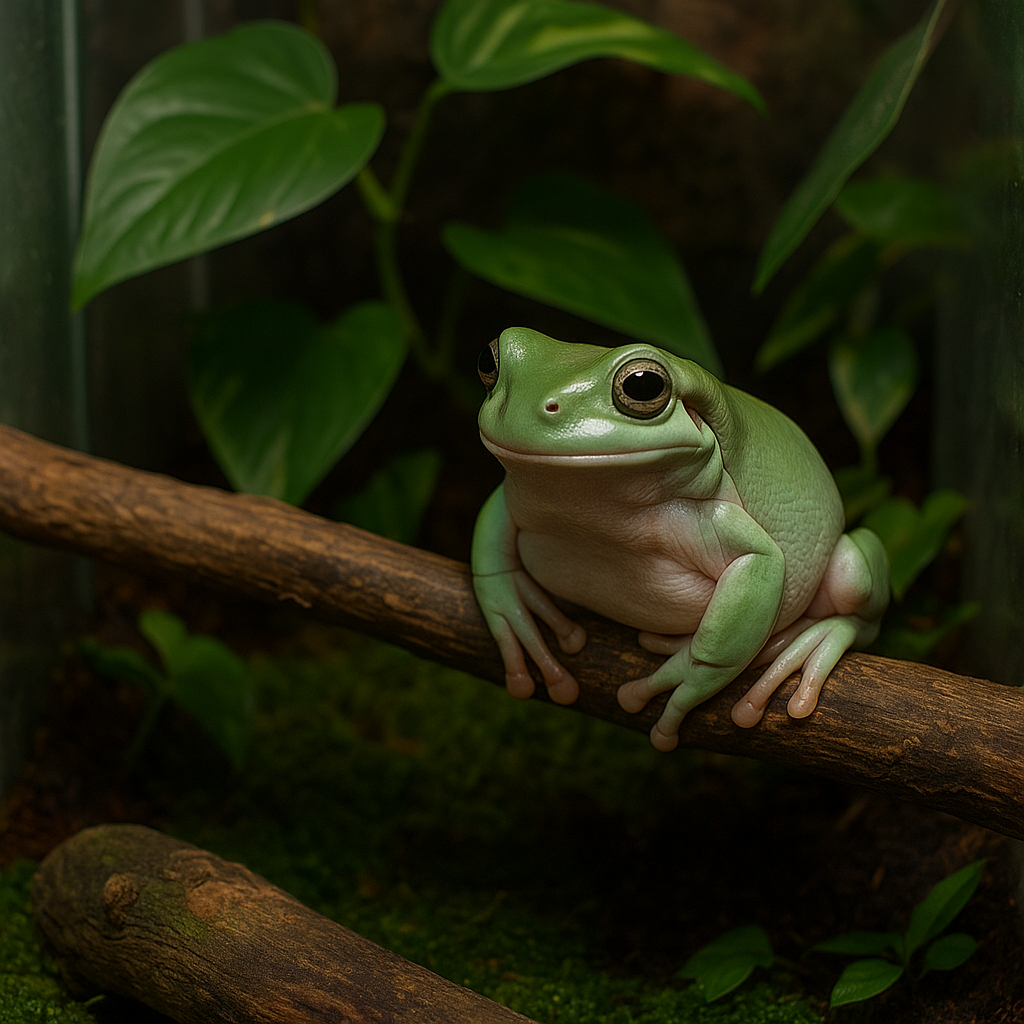Mourning geckos (Lepidodactylus lugubris) are one of those hidden gems in the world of bioactive vivariums. Small, hardy, and endlessly fascinating, these tiny lizards are perfect candidates for planted enclosures where dart frogs and other tropical animals thrive. They are not just low-maintenance pets in their own right, but also contribute to the ecosystem of a vivarium, controlling pests and recycling food.
But with their rapid breeding and knack for scaling glass, one question often comes up: what if you have too many, or need to move them? That’s where the focus of this article comes in — how to catch mourning geckos humanely. No chasing, no stress, no broken tails. Just a calm, simple process that respects these animals.
Let’s start by understanding the species, before moving on to the practicalities of their care and safe handling.
What Are Mourning Geckos?
Mourning geckos are small parthenogenetic lizards native to coastal regions of the Indo-Pacific. “Parthenogenetic” means they reproduce without males; every individual is female and capable of laying fertile eggs. This makes them one of the most successful colonisers of new environments in the reptile world.
- Size: Adults reach around 9–10 cm in length.
- Appearance: Brown to grey in colour, often with subtle mottling. They blend easily into bark and foliage.
- Activity: Nocturnal, but often seen scuttling around at dawn and dusk.
- Behaviour: Skittish at first, but in time, they become bold and will even come out in daylight in a safe vivarium.
Because of their self-replicating nature, even a single gecko can establish a population in a tank. This is both a blessing and a curse — great if you want a colony, but it can lead to overcrowding if left unchecked.
How Mourning Geckos Reproduce
Mourning geckos lay paired eggs that are usually glued to a hard surface: the underside of cork bark, leaves, or even glass corners. The eggs are hard-shelled, unlike many reptiles, and are tricky to remove without damage.
- Clutch size: 2 eggs per laying, often every 4–6 weeks.
- Incubation: At room temperature (24–27°C), eggs hatch in around 60–90 days.
- Hatchlings: Tiny replicas of the adults, perfectly capable of hunting springtails or fruit flies.
Because every individual is female, the genetic diversity is low, but that hasn’t stopped them spreading across continents. In captivity, it means if you keep them, you will almost certainly have more before long.
Diet and Feeding
Mourning geckos are omnivores with a sweet tooth. In the wild, they eat nectar, small insects, and soft fruits. In captivity, their diet is straightforward:
- Live foods: Pinhead crickets, fruit flies, small roaches.
- Prepared diets: Commercial gecko diet powders (like those used for crested geckos) mixed with water.
- Fruit treats: Mashed banana, mango, or papaya (in moderation).
In a vivarium, they also scavenge leftovers, helping keep the environment clean. They won’t directly harm dart frogs but will sometimes eat leftover fruit fly cultures meant for them.
Temperature and Humidity
Mourning geckos are forgiving, but they do best when their environment matches tropical conditions:
- Temperature range: 24–28°C during the day, with a drop to 21–22°C at night.
- Humidity: 60–80% is ideal, mimicking coastal rainforest conditions.
- Lighting: Not UVB-dependent, but benefit from low-level UVB exposure and a proper light cycle for the plants in the vivarium.
This matches closely with the requirements of dart frogs, which is why the two species are often kept together.
Compatibility With Dart Frogs
This is where things get interesting. Dart frogs (Dendrobatidae) and mourning geckos are natural allies in a bioactive vivarium. They share overlapping temperature and humidity requirements, and both thrive in densely planted enclosures with plenty of hides.
Benefits of keeping them together:
- Frogs stay on the ground; geckos occupy the vertical space.
- Geckos help mop up fruit flies that escape feeding dishes.
- Both benefit from the stable, humid environment.
Things to watch out for:
- Dart frogs may occasionally snap at hatchling geckos, though it’s rare.
- Overbreeding geckos can outcompete frogs for fruit flies.
- Eggs glued in awkward spots can clutter the enclosure if not managed.
Overall, they complement each other well, but some keepers prefer to keep their gecko colony separate to avoid fruit fly competition.
The Main Question: How to Catch Mourning Geckos Humanely
Catching a mourning gecko is notoriously tricky. They are lightning fast, can climb smooth glass, and will drop their tails if stressed. The last thing you want is to chase them around the vivarium with your hands — this only causes stress and potential injury.
Here’s the humane way to catch them:
- Use a Feeding Cup or Small Container
- Place a small plastic cup or tub in the vivarium.
- Add a dab of gecko diet or mashed fruit inside.
- Wait patiently. Geckos are curious and food-driven; they’ll often wander straight in.
- Trap Without Stress
- Once the gecko is inside, gently cover the opening with a card or lid.
- No chasing, no grabbing. The gecko feels safe because it walked in by itself.
- Relocate Smoothly
- Move the container to the new enclosure.
- Gently let the gecko climb out onto cork bark or foliage.
This method is shown in the accompanying video guide, where you can see how quick and stress-free the process is. It’s by far the best way to manage a colony without harming your animals.
Why Humane Catching Matters
Mourning geckos may be small, but they are living animals that deserve respect. Rough handling can:
- Cause tail loss, which is stressful and unnatural.
- Lead to escapees (good luck finding them under the sofa!).
- Break the trust of your colony, making them more skittish long term.
By using calm, food-based trapping, you’re not only making your life easier, you’re also ensuring your geckos remain bold and comfortable in their environment.
When Should You Catch and Remove Mourning Geckos?
There are a few scenarios where catching becomes necessary:
- Overcrowding: Too many individuals in one vivarium can stress the colony and deplete food.
- New Vivarium Setup: Moving some to seed another enclosure.
- Compatibility Issues: If kept with dart frogs and food competition arises.
- Selling or Rehoming: Mourning geckos are in demand, and extra juveniles can easily find new homes.
The key is to keep populations balanced. A few geckos in a large vivarium thrive; too many, and you’ll struggle with food demand and stress.
Final Thoughts
Mourning geckos are one of the most rewarding additions to a bioactive vivarium. They’re fascinating to watch, easy to care for, and fully compatible with dart frogs and other tropical setups. Their parthenogenetic reproduction means you’ll never run out of them, but it also means you’ll need to know how to manage their numbers.
The trick, as always, is patience. Let them come to you, use food as a lure, and move them with care. That’s the true answer to the question of how to catch mourning geckos humanely — respect the animal, respect the ecosystem, and enjoy the balance they bring to your vivarium.



